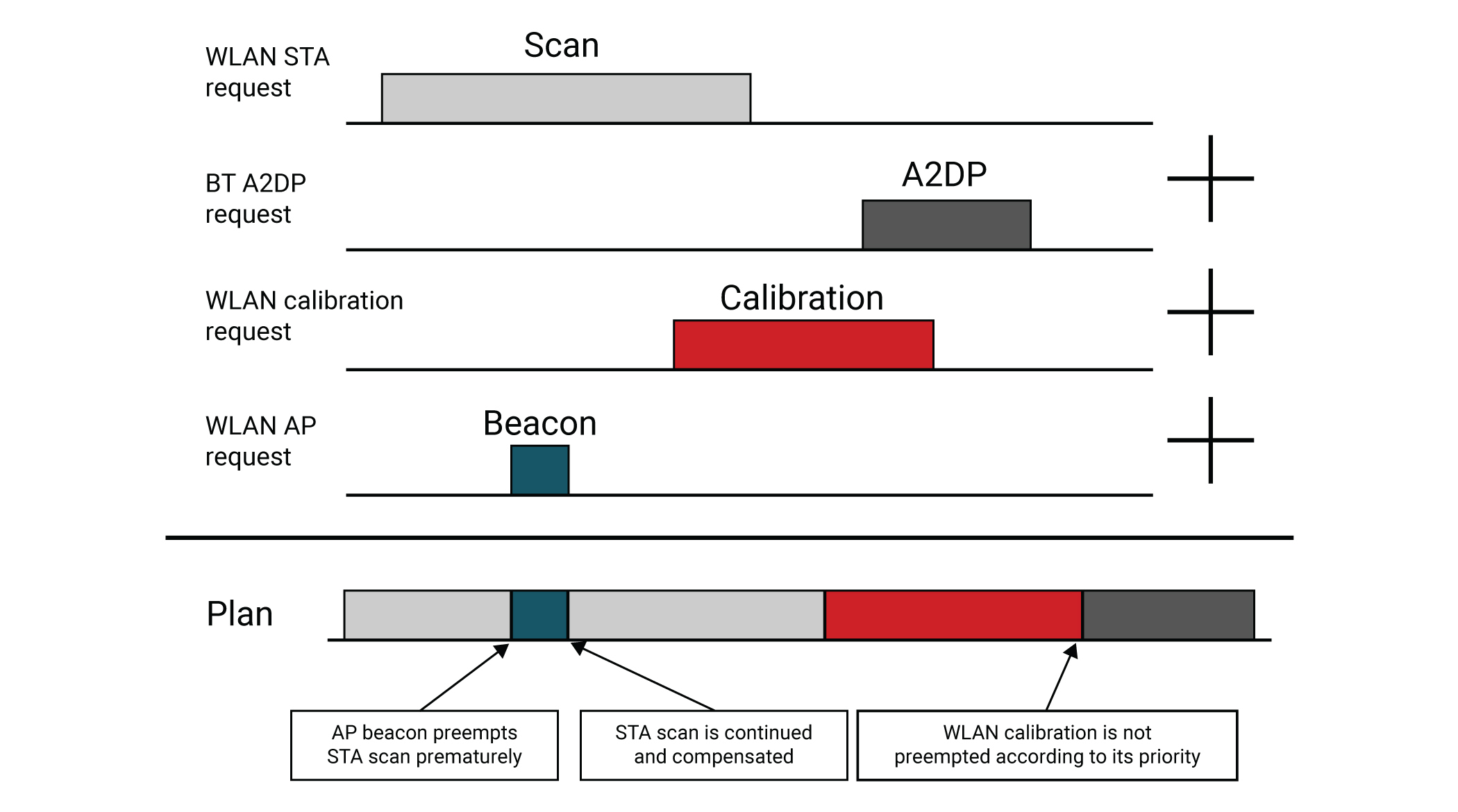SWRA733 March 2022 WL1807MOD , WL1837MOD
4.2 Scheduling the Role Activities
Based on the up-to-date activity requests status a plan is generated (and re-generated with every new request or based on timeout). The plan is always open for changes and the scheduler manages suspension and resumption of those activities to utilize the system as much as possible. For this, the current activity can be pre-empted by another higher priority activity and as a consequence when it resumed it might be compensated.
To suspend or resume role’s activities is not immediate and takes some time. When a new activity starts, the time needed to complete it is computed in advance. This allows to estimate the point in time to be ready to start suspending the current activity and be ready to resume the next one just in time. A high-level multi-role activity scheduling scheme is presented in Figure 4-1.
 Figure 4-1 High Level Scheduler Generated
Plan Guidelines
Figure 4-1 High Level Scheduler Generated
Plan Guidelines